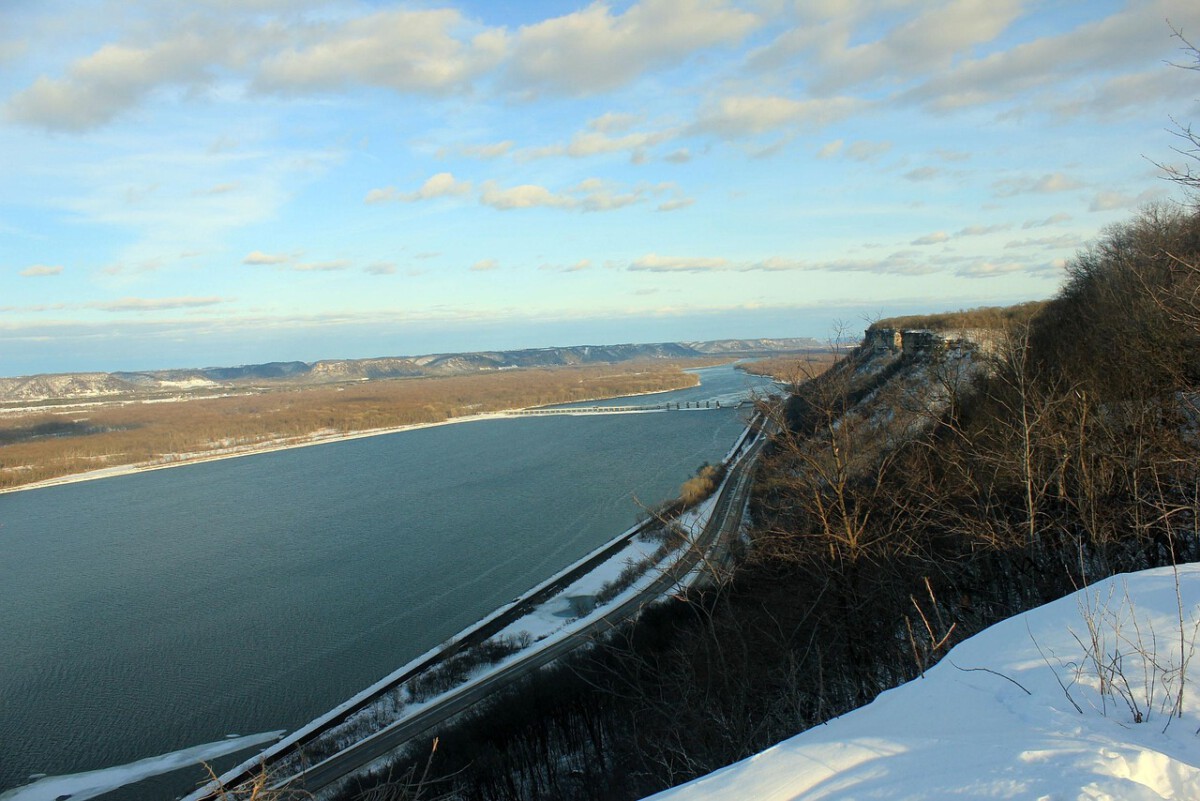The Pacific Coast Highway – California’s Journey of Self-Discovery

Picture this: you’re cruising down Highway 1 with the Pacific Ocean stretching endlessly to your left and dramatic cliffs rising to your right. More than 75% of Americans are planning road trips, and driving remains the most popular way to travel, with 9 in 10 holiday travelers hitting the road. The Pacific Coast Highway isn’t just a drive—it’s a 655-mile meditation on life itself. Starting from San Francisco and winding down to Los Angeles, this route forces you to slow down and think differently about what really matters. You’ll find yourself stopping at Big Sur, where writers and artists have found inspiration for decades, questioning your own creative potential. The seemingly endless views of the Pacific Ocean along Highway 1 are what road trip dreams are made of, with perfect stops like Santa Cruz’s surfing waves, seasonal cuisine in Malibu, and a night in Big Sur. By the time you reach Monterey, you might realize that the journey itself has been more valuable than any destination you originally planned.
Route 66 – The Mother Road That Teaches Resilience

The “Mother Road,” Route 66, is the quintessential American road trip, stretching from Chicago all the way to Santa Monica, covering nearly 2,500 miles. But here’s what no guidebook tells you: this isn’t really about the quirky roadside attractions or vintage diners. It’s about discovering your own resilience when your GPS fails in the middle of nowhere, New Mexico. You’ll pass through quirky towns with names like Tucumcari and Winslow, encountering bizarre roadside attractions like the Cadillac Ranch in Texas, while the history lives on through vintage diners, motels, and neon signs. Some participants reported that their transformation occurred when venturing beyond the traditional routes and observing different lifestyles, often in impoverished conditions, realizing “how different their culture was from mine.” The decommissioned highway becomes a metaphor for life’s unpredictability—teaching you that sometimes the most meaningful experiences happen when plans fall apart. You’ll return home with a deeper appreciation for America’s heartland and maybe a new understanding of your own adaptability.
The Blue Ridge Parkway – A Spiritual Awakening Through Nature

America’s longest linear park is also one of its most scenic, which makes the Blue Ridge Parkway a clear winner, offering spectacular views and hiking opportunities along the way. This 469-mile stretch through Virginia and North Carolina isn’t just about pretty views—it’s about reconnecting with something primal within yourself. The Blue Ridge Parkway connects Shenandoah National Park in Virginia to the Great Smoky Mountains for 469 miles, with every mile packed with scenic overlooks of the mighty Appalachian, especially during fall when trees transform into a symphony of reds, oranges, and yellows. The 469-mile route meanders past limestone caverns, clear mountain springs, and Appalachian majesty, offering different panoramic vistas depending on the season. When you’re standing at one of the 70+ overlooks, breathing in mountain air that feels older than civilization, you start questioning the frantic pace of modern life. Many travelers describe having profound realizations about what truly brings them peace while watching sunrise paint the ancient peaks in golden light.
The Alaska Highway – Confronting Your Comfort Zone

This weeklong drive in Alaska starts and ends in Anchorage, traveling along four scenic byways to explore Wrangell–St. Elias wilderness, the largest U.S. national park, catch sight of Denali, the tallest peak in North America, and enjoy the surprisingly stellar food scene of McCarthy. Let’s be honest—this trip will scare you at first. The vast emptiness, unpredictable weather, and cell phone dead zones force you to confront your dependence on technology and constant connection. You’ll drive hours without seeing another soul, which sounds terrifying until it becomes liberating. Transformational travel allows you to step outside your comfort zone and challenge yourself in new and meaningful ways, providing an opportunity to connect with others and learn from different cultures and perspectives. By day three, you’ll notice something shift—the silence becomes comfortable, and you start hearing your own thoughts clearly for the first time in years. Solo travel is emerging as a liberating option, giving individuals the freedom to create itineraries and set their pace without compromising, whether sunbathing on a quiet beach or wandering through serene countryside landscapes.
The Great River Road – Following America’s Backbone

Following the Mississippi River for over 2,300 miles from Minnesota to Louisiana, the Great River Road reveals America’s true character in ways that might surprise you. Road trips were the most popular form of travel in 2024 (40%), along with slow travel (traveling without a plan) (22%) and multi-generational family trips (21%). This isn’t the America you see on TV—it’s small river towns where people still wave at strangers, historic sites that tell uncomfortable truths about our past, and endless farmland that feeds the nation. You’ll stop in places like Hannibal, Missouri, where Mark Twain’s childhood shaped American literature, and realize how geography influences perspective. During trips to small towns in Mexico, travelers witness how different life can be in another part of the world, learning to appreciate the little things and rethink what truly matters, realizing we can get so caught up in our routine that we forget to appreciate what we already have. The river becomes your constant companion, teaching patience as you watch its steady flow through America’s heartland. By journey’s end, you’ll have a deeper understanding of how this mighty waterway has shaped the nation’s soul.
Utah’s Mighty Five National Parks Circuit – Humility Through Grandeur

Utah is adored for its delicious food scene and gorgeous natural landscapes, with this scenic road trip of Utah’s National Parks allowing you to get up close with some of the most beautiful sights throughout the 1,050-mile voyage. Scenic Byway 12 gives you front-row seats to Utah’s epic desert landscapes, driving through Bryce Canyon, Capitol Reef National Parks, and state parks like Escalante and Kodachrome Basin, with otherworldly terrain from arched rock formations to horizons of hoodoos. Standing beneath the towering arches in Arches National Park or gazing into the depths of Canyonlands makes you feel simultaneously insignificant and deeply connected to something ancient. This type of travel often sparks a new appreciation for the delicate balance between humans and nature, experiencing a profound sense of awe and humility in the face of overwhelming natural beauty. The red rock formations, carved over millions of years, put your daily problems into stark perspective. You’ll find yourself questioning what legacy you’re leaving and whether your current priorities align with the timeless beauty surrounding you. Many visitors describe having life-changing moments while watching sunset paint the sandstone cliffs in impossible shades of orange and purple.
The Loneliest Road in America – Nevada’s Highway 50

Life magazine once called Nevada’s Highway 50 “The Loneliest Road in America,” but that nickname misses the point entirely. Transformational travel is not just about the experiences you have while away, but also about the insights and reflections you gain from those experiences, taking time each day to journal, meditate, or simply sit quietly and reflect. This 287-mile stretch across Nevada’s high desert forces you into solitude that our hyperconnected world rarely allows. Between Austin and Ely, you’ll drive for hours seeing nothing but sage brush, distant mountains, and endless sky. The desire to live a calmer, more serene lifestyle is on the rise, with searches for “quiet living” experiencing a 530% jump, and travelers looking for digital detoxes in nature destinations that offer respite from connectivity and digital distractions. The silence becomes almost deafening at first, then profoundly peaceful. You’ll start noticing details you normally miss—cloud formations, the way light changes throughout the day, the subtle variations in desert vegetation. By the time you reach the next town, you’ll have had conversations with yourself that you didn’t know you needed to have.
The Natchez Trace Parkway – Walking Through History’s Footsteps

The Natchez Trace Parkway stretches from Nashville to Natchez, Mississippi, by way of Tupelo—the birthplace of Elvis Presley—offering easy access to archaeological sites, prehistoric ceremonial mounds, Civil War battlefields, and the original Native American trail. This isn’t just a scenic drive—it’s a journey through layers of American history that will challenge everything you thought you knew about this country’s past. Study participants have transformative experiences during both national and international trips, visiting both popular destinations and less conventional places, with some reporting transformation when venturing beyond traditional routes and observing different lifestyles. You’ll walk ancient Native American paths, stand on Civil War battlefields where boys became men overnight, and visit sites that predate European colonization by thousands of years. When you engage with local culture, visit local markets, and experience life from different perspectives, it helps you see your own life in a new light and make you more grateful for what you have at home. The Trace teaches perspective about how brief our individual stories are compared to the countless others who have traveled this same route. You’ll return home with a deeper appreciation for the complex, often difficult history that shaped modern America.
The Columbia River Gorge – Oregon’s Waterfall Therapy

The Columbia River Gorge Scenic Highway is all about waterfalls, with this 75-mile route following the Columbia River and featuring no less than 77 waterfalls, including the famous Multnomah Falls, built in the early 1900s along stunning northern Oregon views. There’s something almost mystical about being surrounded by 77 waterfalls in a single journey. The constant sound of falling water creates a natural meditation that clears your mind in ways that surprise even skeptical travelers. Retreats provide the opportunity to step away from the distractions of daily life and focus on your own personal growth and well-being, with amazing experiences and personal growth awaiting. Each waterfall has its own personality—some thunderous and commanding, others gentle and contemplative. Some of the biggest breakthroughs and ideas come during quiet moments on the road, whether watching sunset in the mountains or spending a day reflecting by the ocean, using travels as a time to reflect on life goals and direction. You’ll find yourself stopping longer than planned at viewpoints, not for photos, but because something about the constant motion of water against stone makes your own problems seem more manageable. The gorge teaches patience—these falls have been carving their way through rock for millennia, reminding you that meaningful change takes time.
The Going-to-the-Sun Road – Montana’s Lesson in Impermanence

Glacier National Park’s Going-to-the-Sun Road is only open completely for a few months each year, which makes it a powerful lesson about seizing opportunities when they present themselves. To learn more about the geology of glaciers, local Native American customs, or the park’s ecosystem, supplement your road trip with a class at the Glacier Institute. This 50-mile mountain road takes you across the Continental Divide at 6,646 feet, offering views that literally make people cry—not from beauty alone, but from an overwhelming sense of connection to something greater than themselves. Nærøyfjord offers a chance to witness the majesty of natural wonders up close, with cruises providing opportunities to explore the region’s unique character and showcase natural treasures, fostering a deeper connection to the environment. When you travel, you have the opportunity to broaden your horizons and see things from a new perspective, with travel having the potential to become a transformative experience, allowing you to come home with a renewed sense of purpose and deeper comprehension of yourself and the world. The glaciers you’ll see are disappearing, making this drive a meditation on impermanence and the urgent need to appreciate what we have while we still can. Many visitors describe having profound realizations about their own mortality and legacy while surrounded by million-year-old ice and rock.
Road trips have this unique ability to strip away the artificial layers of our daily lives. While 54% of Americans say the current economy is impacting their travel plans, 2 in 3 are still budgeting for travel in 2024, with the average person putting aside $5,300. Travel isn’t just about seeing new places—it’s about discovering new parts of yourself, whether stepping out of your comfort zone or embracing new perspectives, with travel having the power to transform us in ways we never expected. When you’re driving through America’s vast landscapes with nothing but time to think, something magical happens. The constant motion forward becomes a metaphor for personal growth, and the changing scenery mirrors your own evolving perspective. Travel is much more than a way to explore new places—it’s a powerful tool for personal growth, whether stepping out of your comfort zone, gaining new perspectives, or learning to be present, with every trip offering valuable lessons that help you flourish and grow.
What’s fascinating is how these journeys work their magic differently on each person, yet the core transformation remains the same—you return home seeing your regular world through new eyes. Did you expect that a simple road trip could become your most profound teacher?






